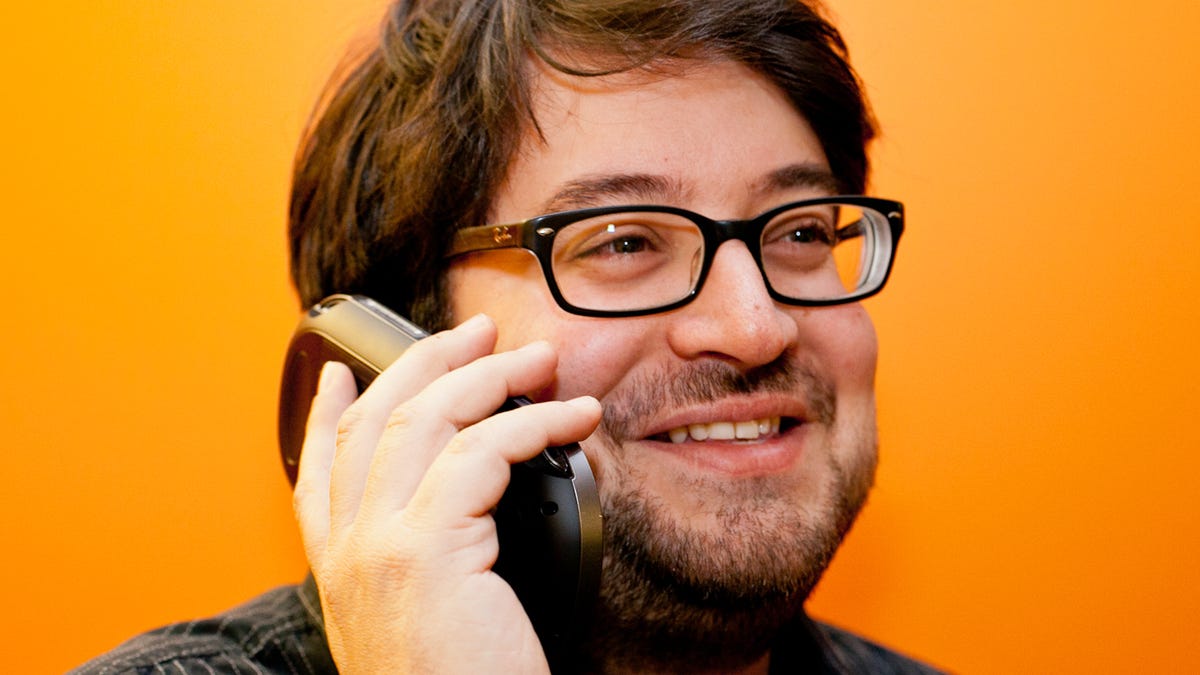The next PlayStation Vita can, and should, be a phone
The PS Vita's a strong piece of hardware, but it would be even better if it weren't purely a standalone device.

I've had the PlayStation Vita for a week. In that time, I've been impressed with the system's potential, and I appreciate the effectiveness of its dual analog sticks, but I've come away with one conclusion stronger than all the others:
The Vita needs to be a phone.
By that I mean, in a phone. The current PS Vita, despite coming in a 3G version with AT&T mobile broadband, is far too large, and obviously couldn't be a phone, unless you used a Bluetooth or wired headset (then again, the Samsung Galaxy Note is basically the same size). However, the fingerprints of a phonelike OS are everywhere. The large, multitouch OLED screen, the gesture-based motions, the Android/iOS-like app icons, the open app pages, the Web browser, the Twitter app, the front- and rear-facing cameras...the PS Vita is so much like a phone that it becomes confusing to describe to anyone who hasn't heard of it before.
I've explained the Vita to several people who didn't know about it, and while "next-generation PSP" does get used quite a bit, so does "like a phone." The interface and the downloadable music, movies, and apps are phonelike, not gamelike.
Here's why I think it could, and should, happen.
Sony has already experimented with making a gaming phone.
The Xperia Play worked from a hardware perspective. The failings of the Xperia Play were its branding and its limited software library. The "PlayStation Suite" games amounted to PlayStation 1 titles--not even PSP games. It was a disconnect for any PlayStation gamer, not to mention any iOS/Android gamer. The funny thing is, the Xperia Play is a great proof of concept for adopting physical gaming-device buttons on a phone. The streaming game service OnLive runs on the Xperia Play, and having a control pad helps gaming as much as you'd expect.
The Vita could easily fit into a smaller device.
The large 5-inch Vita OLED screen has a display resolution of 960x544 pixels. The iPhone 4S has a resolution of 960x640 pixels, in only 3.5 inches. The point being: the Vita screen could be shrunk down to 4 inches and be perfectly fine.
The original PSP's chief physical limitation was its UMD discs. Not anymore.
The PSP Go dropped UMDs to become more pocketable, at the expense of its utility to most PSP owners. However, the Vita's game cards are tiny; smaller than an SD card, they're almost absurdly small compared with the size of the Vita itself. These cards could easily slot into a smaller piece of hardware: a shrunken-down next-gen Vita, or even a Vita phone.
The Vita, being so app-based, can survive as a platform, not just a product.
Sony's experiments with PlayStation-certified tablets would be better served by adding Vita cross-compatibility in the future. That's probably been the plan all along. Vita games and apps should work on tablets or other devices, and it's not too difficult to imagine. Sony's Kazuo Hirai has already hinted that the Vita OS may move to other products. Making a Vita phone would be a way of diversifying and keeping Vita gaming alive--there could, and should, still be a dedicated nonphone Vita, too.
Sony needs the Vita to have relevancy.
For most "non-hard-core" gamers, the Vita will be little more than an odd novelty. Versatility is key for the Vita in the long run in order to keep the platform from painting itself into a corner. If you don't think that's essential, then you simply haven't been paying attention to what's been happening in gaming. Yes, the Xbox 360 and PlayStation 3 have succeeded as "gamer systems," but they've also made great strides at being mass-market devices with kid-friendly peripherals like the Kinect and Move as well as evolving into set-top Blu-ray player/interactive TV boxes.
While the idea of a Vita as a dedicated gaming device may have its charm, the truth is that a dual-analog control pad and downloadable catalog of high-end Vita titles would be a killer way to turn an Android phone into the ultimate gaming smartphone. Make a Vita phone that works with PSP and Vita games--and runs Android apps--and Sony might actually have a vital competitor to the iPhone.
There's only so much room in my pockets.
If I'm going out, do I take my PS Vita or my phone? Of course I'm bringing my phone. Dedicated gaming devices are great for commutes or long trips, but I'm not likely to take one around like I do my phone. The sooner a Vita phone exists, the more likely it will be to stay in pockets.
I'd love to see it happen. Right now, the PS Vita is a strong piece of hardware with a small but compelling set of software that's simply too specific and high-priced to reach much further than a narrow market. That could easily change, though, in a year. And, let's face it: iPhone and Android games are the bleeding edge of the mobile game industry, but the lack of dedicated buttons crimps more hard-core mobile gaming. Sony, do you smell the opportunity?
Do you agree?

